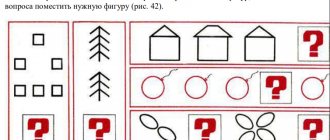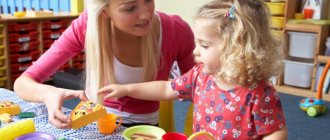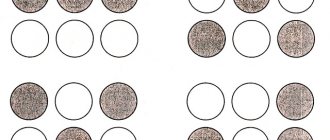What is thinking?
There are many definitions of this concept, but, in essence, they all boil down to one thing: thinking is the process of cognition through generalizations, an indirect reflection of reality. That is, this is knowledge that we receive not from the senses, but through the thought process.
A simple example can be given: we look at a boiling kettle and know for sure that the water in it is very hot. We do not need to measure its temperature using special instruments, we do not need to test the water with our hands. We remember what boiling water looks like, and, having generalized our knowledge and extended it to a specific kettle of water, we draw a conclusion. This is how the thinking process works.
Let's look at the basic mental operations that help the cognitive process.
- Analysis is the mental operation of decomposing the object being studied into its component parts, properties or characteristics. Analysis helps to highlight certain properties of an object that we need in a particular case. There can be as many of them as you like. For example, how can you describe an apple? It is round, red, edible.
- Synthesis is an operation opposite to analysis, when objects or phenomena are combined into groups based on common features. In our example: something red, round and edible - what could it be? Apple? Yes, but not only - obviously, the description would include a tomato, a plum, and a candy of the appropriate shape.
- Generalization is the combination of various objects or phenomena into one group based on a common feature. For example: several items of different shapes - an apple, a banana and a pear - can be combined into the “Edible” group. And the apple, red bow and fire truck are in the “Red Objects” group.
- Comparison . Everything is simple here: objects or phenomena that have a common characteristic are compared with each other. The apple is as red as a fire truck, but much smaller. The common feature is color, the difference is size.
- Concretization . Based on general characteristics, specific objects can be identified. In our case: red objects - an apple, a fire truck, a bow. Edible products: banana, apple, pear, tomato.
- Analogy . Transferring knowledge about one subject/phenomenon to another (less studied or inaccessible for study). Knowing the characteristics of one apple, we can draw conclusions about all the apples in the basket.
Thinking operations also include:
- Abstraction is when, while studying a subject, it is necessary to concentrate on one of its properties, ignoring the rest. For example, a ball and an orange are round objects, and that’s where their similarities end. But if we need to name exactly objects that have the shape of a ball, we can abstract from the remaining properties of an orange and a ball.
- Classification is the distribution of objects according to some characteristics. For example, we can categorize objects by shape (round or not); color (red and not), the sign “edible or inedible”. Mental classification helps organize knowledge about a subject.
- Systematization - arrangement of objects in a certain order. For example, all red objects can be arranged according to size: fire truck - apple - bow.
The process of learning, acquiring any new knowledge, as a rule, includes a person simultaneously performing several such mental operations.
Where is it used?
Children, with the help of abstract thinking, draw, design, sculpt, understand the meaning of riddles, can solve problems, and coherently express their thoughts when describing events. During school years, this type of mental activity helps schoolchildren master mathematics, which requires the ability to operate with a lot of data, divide them into groups, and look for relationships.
Abstract thinking is used in logic, physics, astronomy and other exact sciences, where one must be able to measure, count, calculate, and combine elements into one group. It is necessary for psychologists, philosophers, writers, engineers. Time management is unthinkable without it.
In everyday life, people also constantly use abstract-logical mental activity. Examples of abstract thinking reflect everyday human thought processes. Planning often intersects in the imagination with dreams and fantasies. Young people looking for a job can come up with so many things that, when faced with reality, they cannot stand the conditions offered to them. So girls, waiting for a prince on a white horse, mentally endow their future chosen one with unrealistic traits. This inevitably leads to disappointment in the future.
Peculiarities of thinking of preschoolers
Psychologists distinguish three types of thinking characteristic of preschool children:
1. Visually effective . Involves studying a subject through direct interaction with it. It develops in a child very first, by the age of 2-3 years. Thinking at this age is based on the principle: “action - observing the results - trying to understand what is happening.” The baby is not yet thinking and practically does not refer to previous experience.
2. Visual-figurative . Appears from 3-6 years of age. Here, previously acquired experience plays an important role. At this age, a child does not have to perform certain actions if he knows their result. He can imagine a familiar object (its image) and even perform certain mental actions with it with the help of memories and imagination.
For example, a 2-year-old child needs both a doll and a spoon to “feed” a doll, and at 5 years old a child calmly operates with an invisible spoon, conducting an active dialogue with the doll, which also sometimes exists only in his imagination.
3. Verbal-logical . Typical for children of older preschool age. This is the most developed stage of thinking. Here, not only actions and images are involved in the process of cognition - the child uses mental operations and reasoning. At this stage of thinking, speech is actively used.
Of course, even at this age, visual material is of great importance, but the child is already able to analyze the situation, predict its development based on previous experience, generalize, and draw conclusions. They say that at the age of 5-7 years, a child’s “logic turns on.”
“Logic” literally translated from Greek means “the science of correct thinking” or “the ability to reason.” That is, in order to develop logical thinking in a preschooler, you need to teach him to think and reason correctly.
It must be remembered that a child’s logical thinking must be based on a certain level of knowledge. Therefore, it is important not only to develop the child’s thinking apparatus, but also to provide him with information about the world around him.
Functions
In psychology, it is generally accepted that mental activity always builds a connection between events or phenomena. A person must analyze information and make conclusions. The tool for these actions is logical thinking. This means that in this case such an ability as cognition moves to a new level. The above process also has a regulatory and communicative purpose. This technique is useful when building communication between people and when conducting joint activities. Logic also allows you to put forward various versions and draw certain conclusions with their help.
So, a person defines his thoughts with the help of words. They can be expressed orally or in writing. It should be noted here that a person acquires these skills in childhood, when he has contacts with adults. Then thinking is developed, which can have the following varieties:
- visual-figurative;
- effective;
- verbal-logical;
- abstract-logical.
Visual-figurative and visual-effective thinking are always associated with the perception of objects when a person interacts with them. But verbal-logical thinking is already based on certain concepts. This is how the knowledge of patterns and relationships in the surrounding reality occurs.
Ultimately, thinking reaches a certain level, then complete ordering of practical actions occurs.
If we talk about abstract logical thinking, then it should be noted that it is also abstract. This type is based on the detection of significant properties, connections, as well as their separation. In this case, properties and connections are divided into essential and less essential.
When cognitive activity begins, the thought process acquires the following functions:
- the role of concepts is classified;
- problems related to life are solved.
- the management of an individual’s activities is facilitated by understanding reality; this process also helps to plan behavior, set goals, and so on;
- both the activity itself and its result are analyzed, and reflection is included in this process.
In addition, the functions of logic are as follows:
- methods of thinking are catalogued, and thinking itself arrives at the truth;
- to study ways of implementing thought processes, the development of theories is included in the overall process;
- the created theories undergo formalization and take the form of symbols or signs.
Important! Logic and thinking have exactly the same functions. For example, logic is always a correct thought process. When a person thinks logically, he uses various techniques to find ways to achieve excellent mental results that lead him to the truth.
Forms of logical thinking
There are three forms of logical thinking: concept, judgment and inference.
A concept is a generalized characteristic of a phenomenon or object, or rather, a group of objects or phenomena that are similar in some way.
For example, “snow is a type of precipitation of crystalline form.” In this case, the concept of “snow” identifies precisely this type of precipitation based on the attribute “crystalline form”.
Judgment is a reflection of connections between objects or phenomena. It is not necessarily true - it can be false, and private, and individual.
An example of a true and general proposition in our case could be the expression “snow always falls at low temperatures,” a particular one — “there are snowless winters,” and a singular one — “there was no snow this winter.”
Inference is the establishment of such connections between concepts (or judgments) in which a new one is obtained from one or more initial judgments - a conclusion.
Obviously, it is the ability to draw conclusions (conclusions) from the information available to a person that speaks of his ability to think logically.
Why is it important to develop the ability to think logically?
Logic helps you process and analyze information faster, formulate questions correctly, and draw conclusions. This is the basis for success in studying and building a professional career.
A person with developed logical and abstract thinking thinks more broadly. He is able to solve complex problems out of the box and offer options that others do not see. Logic implies flexibility and plasticity of the mind. In the age of rapidly changing technologies, mental skills help you always stay on trend and quickly master new competencies.
Every person needs logical thinking skills, regardless of their occupation. We are bombarded with huge flows of contradictory information from all sides; only those who know how to operate with logical constructs can understand the truth and falsity of judgments and opinions.
Development of logical thinking in preschoolers
A 5-7 year old child is already able to use mental operations: analyze objects and phenomena, highlight their characteristic features, establish cause-and-effect relationships, and draw conclusions. That is, logical thinking is quite accessible to children of older preschool age.
At the same time, child psychologists warn parents against trying to quickly “transfer” a child from the stage of imaginative thinking to the more developed stage of logical thinking. It is not worth preventing a child from “thinking in pictures”, if only because such a skill develops creativity in children, and therefore facilitates the search for solutions to non-standard problems. The lack of developed imagination can result in a child’s inability for abstract thinking, which develops later, by the age of 10.
The main role of parents is to provide children with the most effective learning process. Children under 3 years old, who “think with their hands,” should be given as many opportunities as possible to tactilely explore objects and their transformations. The child must assemble a tower of cubes, make a cake out of sand, bathe a duck in water, and so on. Material for research may be limited only for safety reasons.
To develop imaginative thinking, it is necessary that the child be able to draw or sculpt objects from plasticine from memory, observe nature, coherently describe pictures, and be able to talk about what result he wants to achieve by assembling a construction set.
You should not expect that, having reached a certain age, a child will immediately jump from one type of thinking to another. He is developing the ability to move to a new level, and he can only realize it with the help of an adult. At the first stage, the participation of an adult in children's activities is necessary. At the same time, he not only does the same thing as the child, but also involves him in the discussion: “What do you think, if you put this detail here, what will happen?” (assembling a construction set), “I forgot what a fly agaric looks like” (drawing a forest).
At a later age, the child needs to be involved in the search for cause-and-effect relationships between phenomena and objects. For example, do not immediately answer his questions, but reason with him or ask him to offer his options. The main thing in this case is not the correct answer, but the search for a solution.
At the age of 5-6 years, children can be offered simple logic problems for preschoolers. The main thing is not to overload your baby: at this age, 10-15 minutes of exercise a day will be enough. And to maintain your child’s interest, try to choose tasks with a fascinating plot and colorful illustrations.
How to take classes?
The lessons themselves with all the exercises can be completed in 1-3 weeks, having mastered the theoretical material and practiced a little. But to develop logical thinking, it is important to study systematically, read a lot and constantly train.
For maximum effect, we recommend that you first simply read all the material, spending 1-2 evenings on it. Then take 1 lesson daily, doing the necessary exercises and following the suggested recommendations. After you have mastered all the lessons, engage in effective repetition using this technique to remember the material for a long time. Next, try to apply logical thinking techniques more often in life, when writing articles, letters, when communicating, in disputes, in business, and even in your leisure time. Reinforce your knowledge by reading books and textbooks, as well as using additional material, which will be discussed below.
Games and exercises to develop logical thinking in preschoolers
Children's games to develop logic will be useful at any age. Here are some examples of such games and exercises.
"The Game in Reverse"
An adult says a phrase that contains a deliberately incorrect message. The child must quickly correct it. Depending on age, you can complicate the original phrases. For example, the little ones understand that the phrase “The snow is hot” should be immediately answered: “Cold”; “Tomato blue” - “Red”. And older children can already compare and answer the phrase “An elephant is smaller than a mosquito”: “More.”
The good thing about this game is that it can be played by an unlimited number of children. In addition, kids are always very cheerful and readily “correct” adults.
"Extra item"
The Find the Odd One game is also a fun activity suitable for all ages.
Pictures or objects are collected in one place (box, hat) according to some principle, and one extra object is thrown there. It needs to be identified and named.
Tasks can be very simple or more complex. For example, for kids you can throw a ball into a box of fruit, and for older children you can put a vegetable in the same fruit.
In this case, in a playful way, the child learns to analyze objects, identify common and different features, and acquire classification skills.
“What does it look like?”
Play association games with your child. Let him say what this or that object reminds him of. You can start with the simplest (an orange is a ball, a potato is a pebble) and gradually move on to more complex associations: what does a rainy sky, a fluffy kitten, a mitten, a table look like?.. The more surprising the association, the better.
Don’t try to tell your child a trivial answer: even if you don’t think that ice cream looks like a balloon, it’s okay, it’s important that the child develops his own images.
This game is more suitable for average preschoolers.
"What does it mean?"
A lightweight version of a full-fledged logic game.
Invite your child to continue the phrase in as many ways as possible: “I took candy from the table. What does it mean?" Options, for example, could be: “There is no more candy on the table”, “The candy is now in my hand (pocket)”, “There are fewer candies on the table”, “I have stained my hand with chocolate”...
The more options are born, the more amazing they are. This game is not for the youngest, but at 4-5 years old children already play it with pleasure.
“Complete the drawing”
The simplest creative task. You can draw any figure (squiggle) on the sheet and invite the child to complete the drawing, so that this figure is definitely involved. For younger children, you can depict something quite recognizable, but not completed, and for older children, do not limit your imagination.
"Find a Pair"
Make pairs of pictures that are logically related to each other. Divide into two piles. Let the child find a pair for each item.
For younger children, you can choose simple options: tree - leaf, fish - aquarium. Older children can cope with a more complex task - for example, “picking up” a syringe for the doctor.
"Item Description"
You name the object, and the child must choose as many epithets for it as possible. For example, a Christmas tree: prickly, tall, beautiful, elegant, green.
The reverse option is also interesting. What could be prickly? The same tree, hedgehog, needle, snow, scarf... The more associations, the better.
The game, of course, is not for the little ones.
"Find the sequence"
For children who can count to at least 10, you can create an elementary number sequence, where each subsequent number is greater/less than the previous one (by a certain number).
2 - 4 - 6 - ...What's next?
9 - 7 - 5 - ...What's next?
Older preschoolers will enjoy pattern-finding games not only with numbers, but also with pictures.
"The Most Necessary Items"
Invite your child to go to the countryside / desert island / on a trip around the world, taking with him only things, for example, with the letter “k” or green, and no more than 10 pieces. Let him explain why he needs this or that thing.
Besides being fun, it's also a good way to test your child's ability to predict future events.
There are many types of developmental activities. Which one to choose depends only on the imagination of adults and the inclinations of children. Some children perceive information better in verbal form, others - through illustrations. The main thing is that the child is interested, so that he gets involved in the process of finding a solution, and begins to think: “Why is this so?” and “What if?”
Logic and mathematics for children
We develop logical thinking, teach you how to work with information and make the right decisions in an interactive game format.
Learn more.
Construction
Building games help develop motor skills, fine motor skills and creative thinking. Creating buildings according to diagrams and reproducing ideas in reality develops spatial and structural-logical thinking.
It would be nice to find time for joint activities with your child in this format. Using cubes you can create very entertaining tasks.
Lego can help you learn many math concepts.
Mathematics is very closely related to logic, so don't forget about math games for kids.
And, of course, the Tangram game perfectly develops children’s logical and spatial thinking.
A very interesting and useful book “Tangram in Riddles”.
All children are delighted with the amazing Möbius strip.
Games
Logical thinking games for preschoolers
If you've ever tried to reason with a three-year-old, you know that a child at that age doesn't think logically. Young children are very concrete and literal in their thinking, and only as they approach school age do they begin to demonstrate a readiness for tasks that require more abstract thinking. However, preschoolers often make surprising connections as they explore and make sense of the world, and there are several fun logic games that will answer your child's question: What is logic?







